Alliums
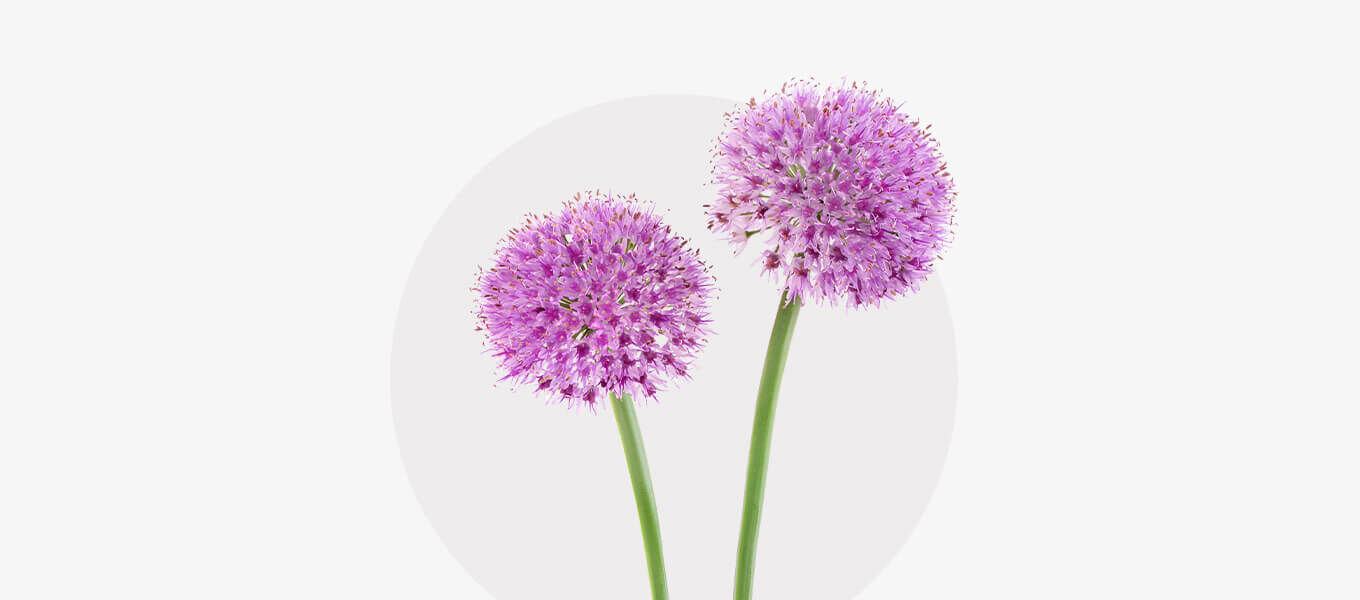
Here you can find out all about the attractive ornamental leek, the most common Allium varieties and species, its easy care and attractiveness. This year, the impressive ornamental leek, botanically Allium, has been given a special honour: the flower bulb association "ibulb" has named Allium "Flower Bulb of the Year 2023". With their showy balls of flowers ranging from purple to blue and white, these bulbous flowering plants can be combined very well with other bulbs and perennials in the flower bed. In addition, the small flowers in the balls are a real magnet for butterflies and bees during their summer flowering period. Their long, sturdy stems with particularly long-lasting flowers also make them attractive as cut flowers - as soloists and in combination with other summer bloomers.
Around 940 perennial species belong to the genus Allium today, making it one of the largest genera of bulbous flowering plants. The variety of species is also huge and grows every year. Together with their edible siblings - e.g. the kitchen onion Allium cepa - they belong to the Alliaceae family.
Appearance
Allium grows with long, sturdy stems. They are called stems because they have no leaves. The individual flowers form an umbel, which is often spherical and can reach a diameter of up to 30cm. They are often purple in colour. However, blue, white, yellow, pink and red are also available.
Origin
Leeks are found all over the world, but most species are found in the northern hemisphere. Many of the ornamental species are steppe and mountain plants and originate from the Near East and Central Asia.
Important species & varieties
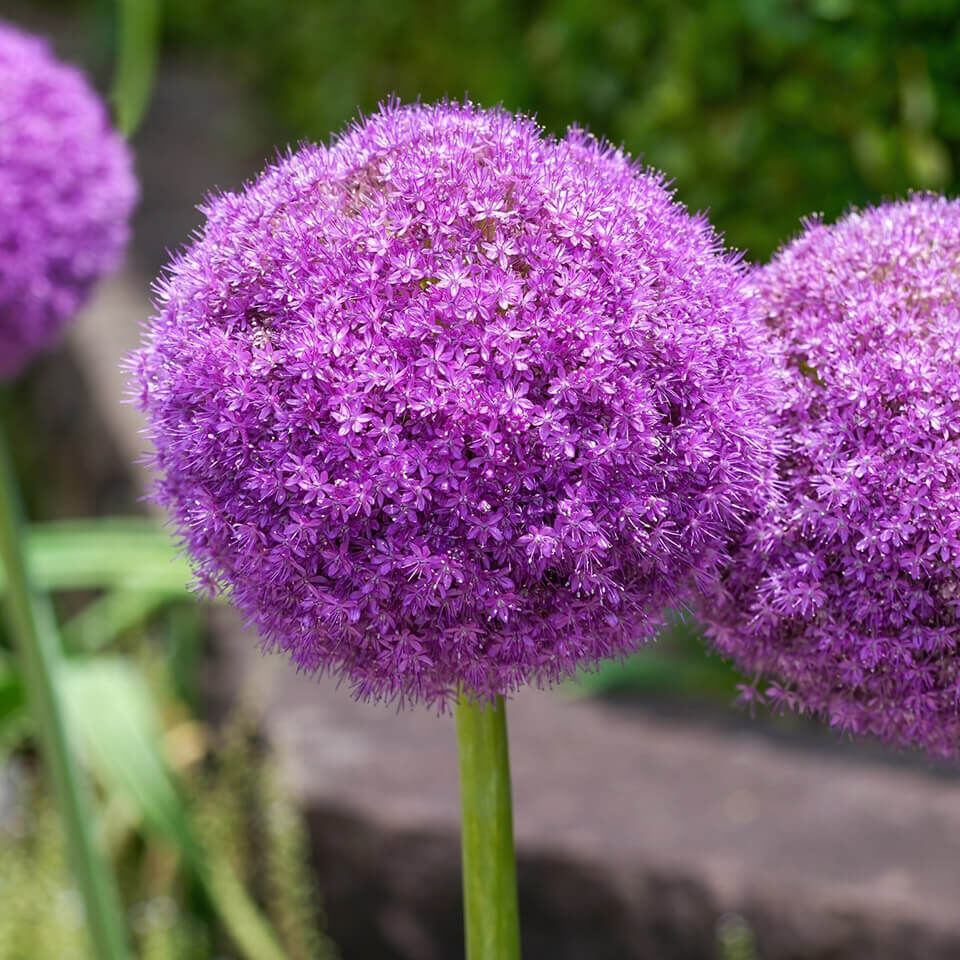
Giant leek (Allium giganteum)
The giant leek is one of the most popular bulb flowers for gardens and parks, but is also a favourite as a cut flower. Its growth is impressive and the huge flower balls are a real magnet. Discovered as early as 1883, the giant leek quickly found its way into many European gardens. Powerful, long flower stalks grow from large, leathery bulbs, around 80 to 200 cm tall. The leaves are matt green to grey, around 20 to 60 cm long and up to 10 cm wide. However, the leaves wither during the long flowering period. The flowers develop in umbels, up to 15cm, the star-shaped individual flowers are close together and appear in pink or purple and white tones. The main flowering period is in June/July, sometimes into August. A faint scent attracts insects. After flowering, their appearance changes. Decorative seed heads then add further ornamental value to the ornamental leek. Allium giganteum can be propagated in the same way as all other ornamental leek varieties, by bulbs and seeds.
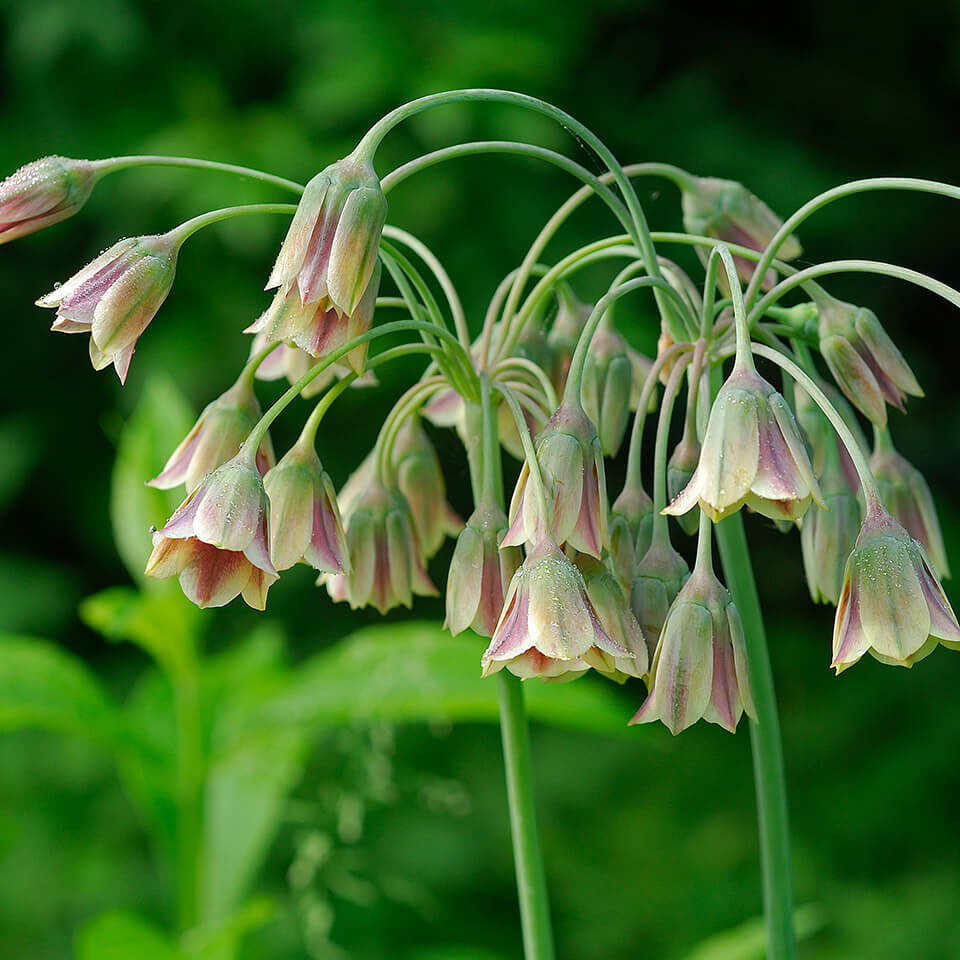
Bulgarian garlic (Nectaroscordum siculum ssp. bulgaricum)
Bulgarian ornamental leeks have bell-shaped flowers arranged in a loose group, which are white with shades of pink and green. This ornamental leek grows up to 100cm tall and flowers from June to August. Loose, well-drained soil in the Allium location ensures that the bulbs will flower again next year.
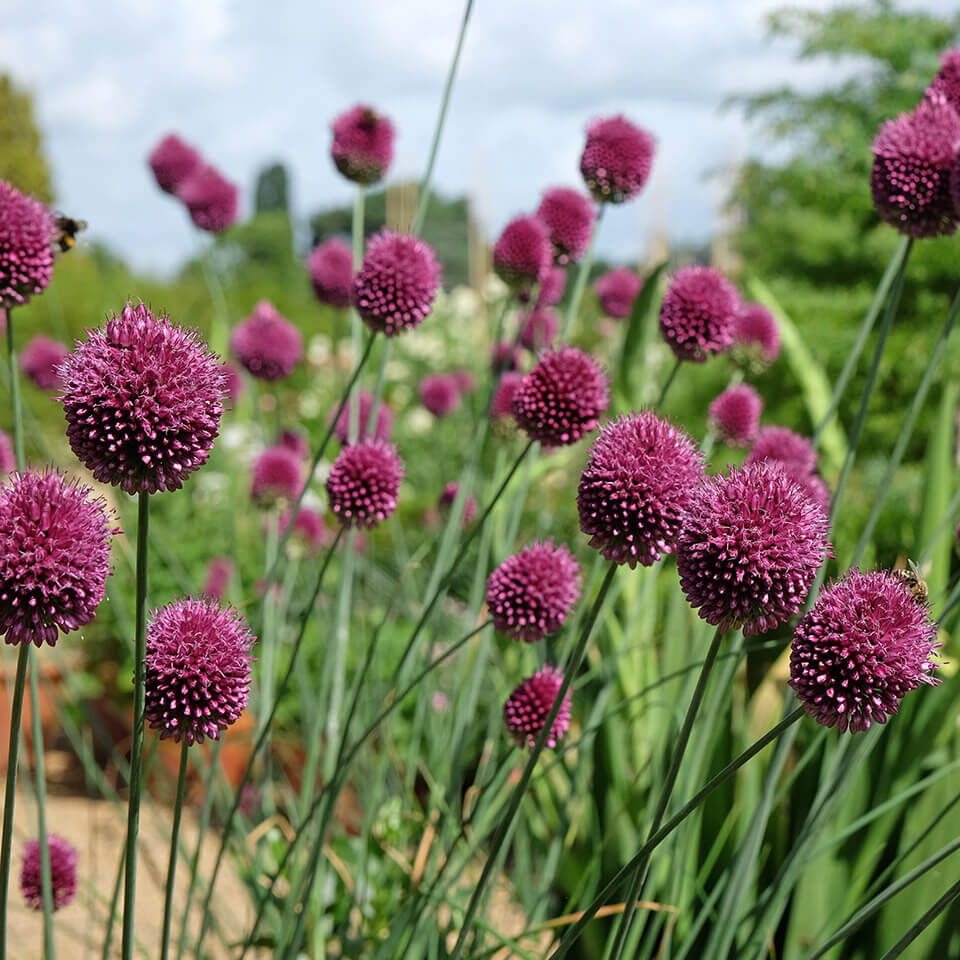
Allium sphaerocephalon (globe leek)
From June, the globe leek displays its purple-red, egg-shaped, pointed flower heads on 60 to 90cm high stems. The species and all varieties of these insect magnets like to run wild and reappear every year in a sunny to semi-shady Allium location in well-drained soil.

Star leek (Allium christophii)
The star-spherical leek develops on stems around 40 cm long with a spherical flower up to 25 cm in size with a metallic sheen, bearing many small star-shaped individual flowers in purple-violet. The flowering period extends from May to June. However, its beige to golden-yellow seed heads remain attractive on the stem for a very long time.
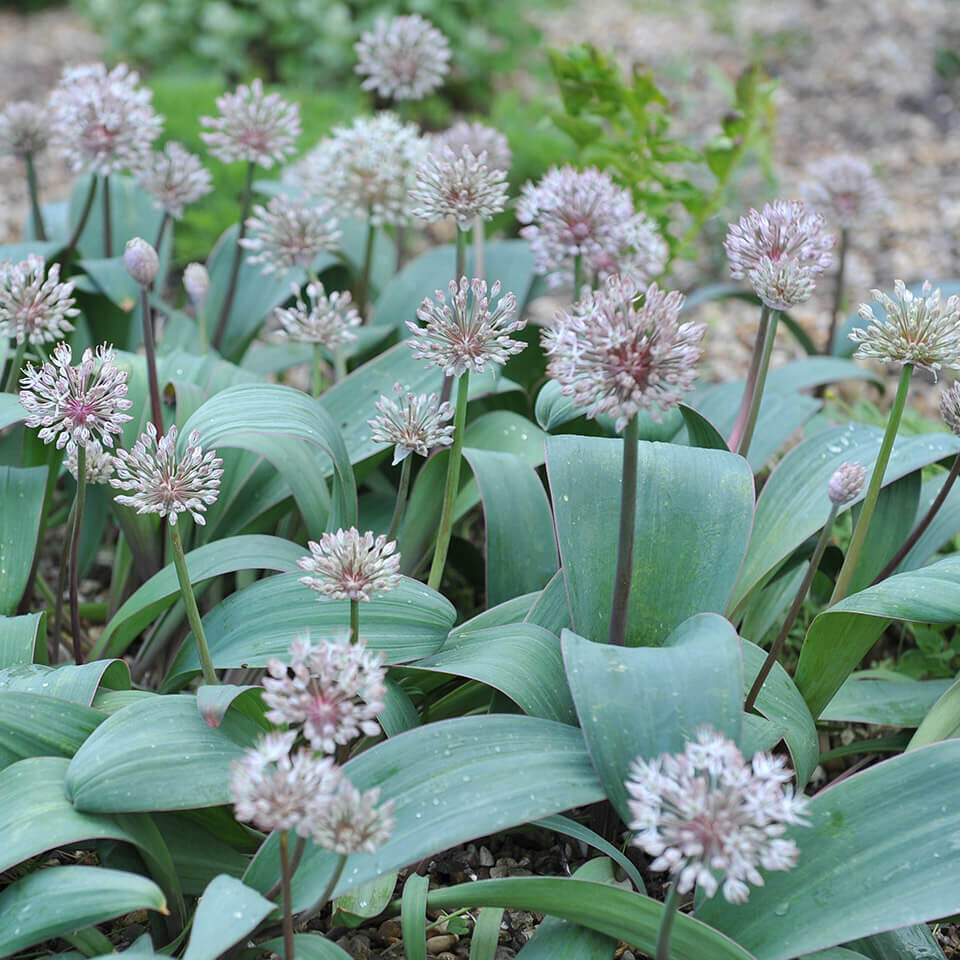
Blue tongue leek (Allium karataviense)
Blue-tongue allium grows 15 to 25 cm high in sun or light shade and produces dense umbels of flowers up to 12 cm wide. The spherical flowers with their star-shaped individual blossoms look impressive on thick flower stalks. The colour of the flowers depends on the variety; this species blooms light pink with dark veins in the centre. During the flowering period from April to June, the delicately scented umbels also attract insects. The fruit capsules of blue tongue leeks are also attractive with a beige to yellow colour, also as a cut flower.
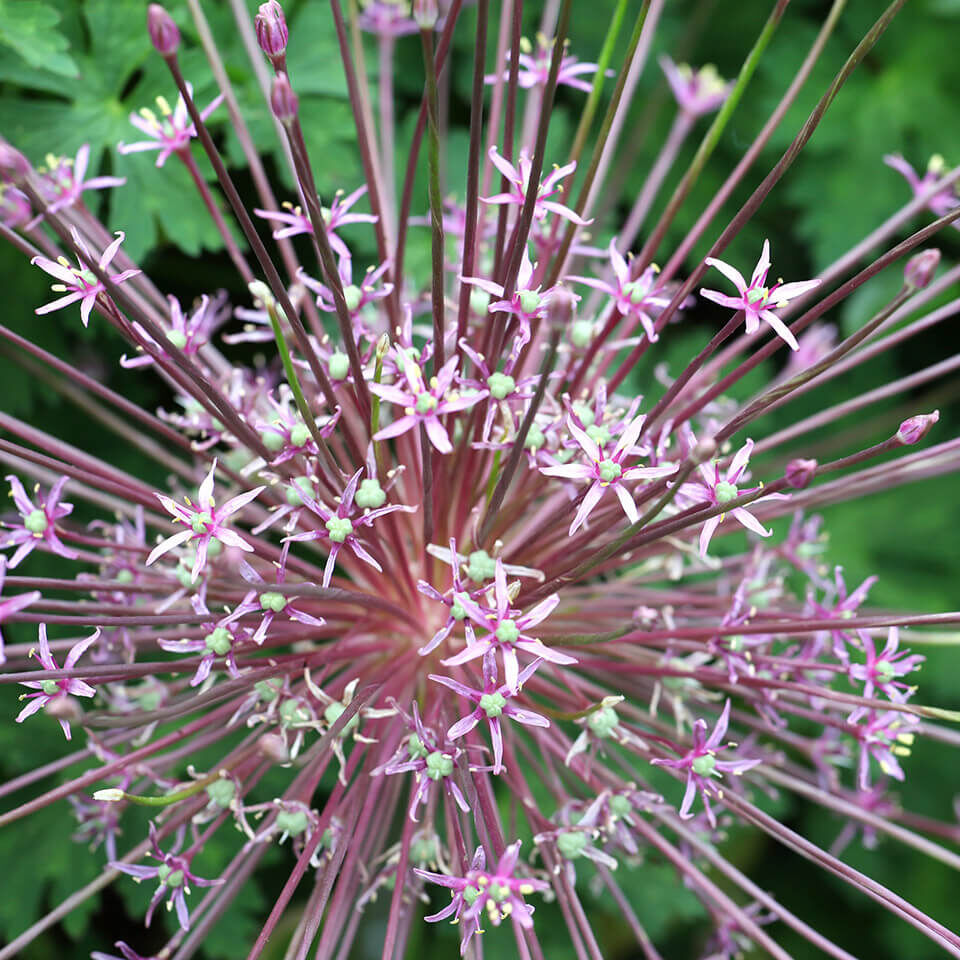
Schubert's leek (Allium schubertii)
Schubert's leek is also known as hedgehog leek and is attractive with its small, violet-pink star-shaped flowers on long tubes that grow out of a spherical inflorescence. The flowers are suitable as cut flowers and also have a great effect when dried. The stems grow to a height of 40 to 50cm. Schubert's leek likes a sunny spot, but the allium should be covered in winter.

Golden leek (Allium moly)
The low-growing golden leek is suitable for rockeries or as a shrub underplanting. Umbrella-shaped yellow umbels with star-shaped individual flowers grow on 20 to 30cm high stems from June to July. They smell of lilies and measure 5 to 8cm. The leaves are grey-green and sword-shaped.
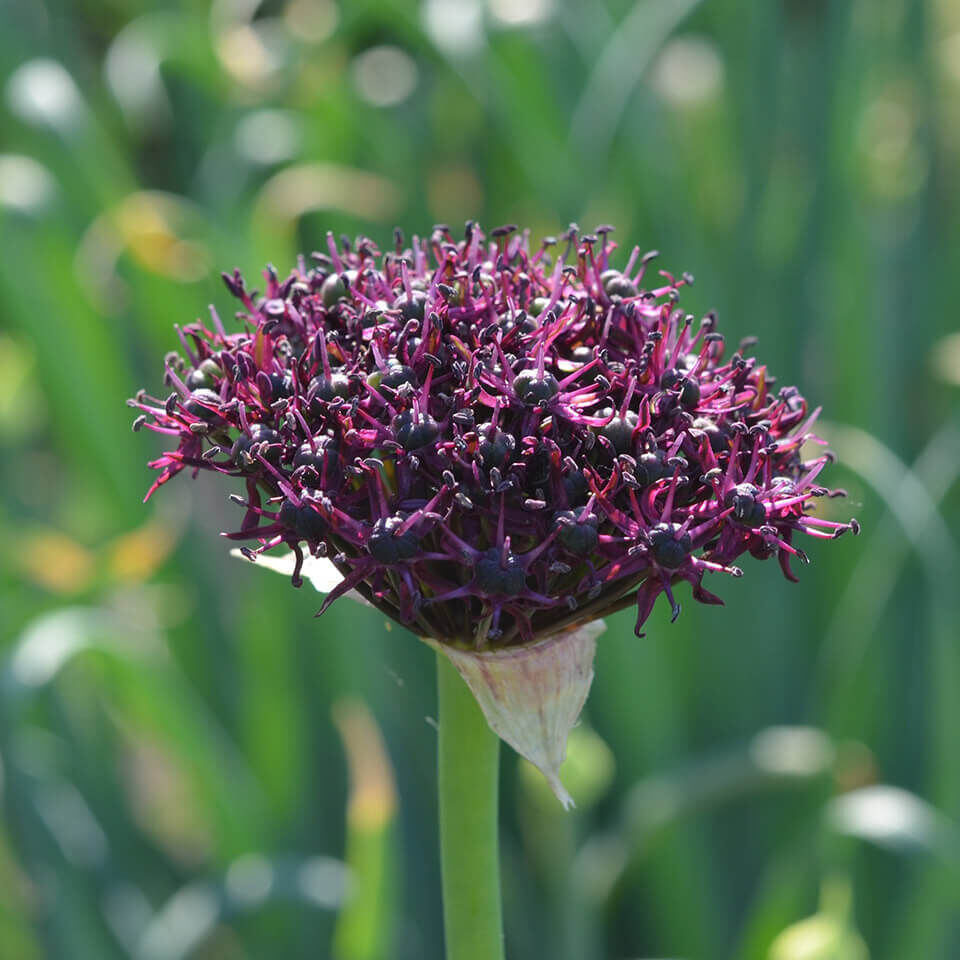
Black and purple leek (Allium atropurpureum)
The black and purple leek is an ornamental leek species with a later flowering period and has dark red-purple, egg-shaped inflorescences. It grows to a height of 30 to 80cm and is suitable for growing wild in rock gardens and as a cut flower.
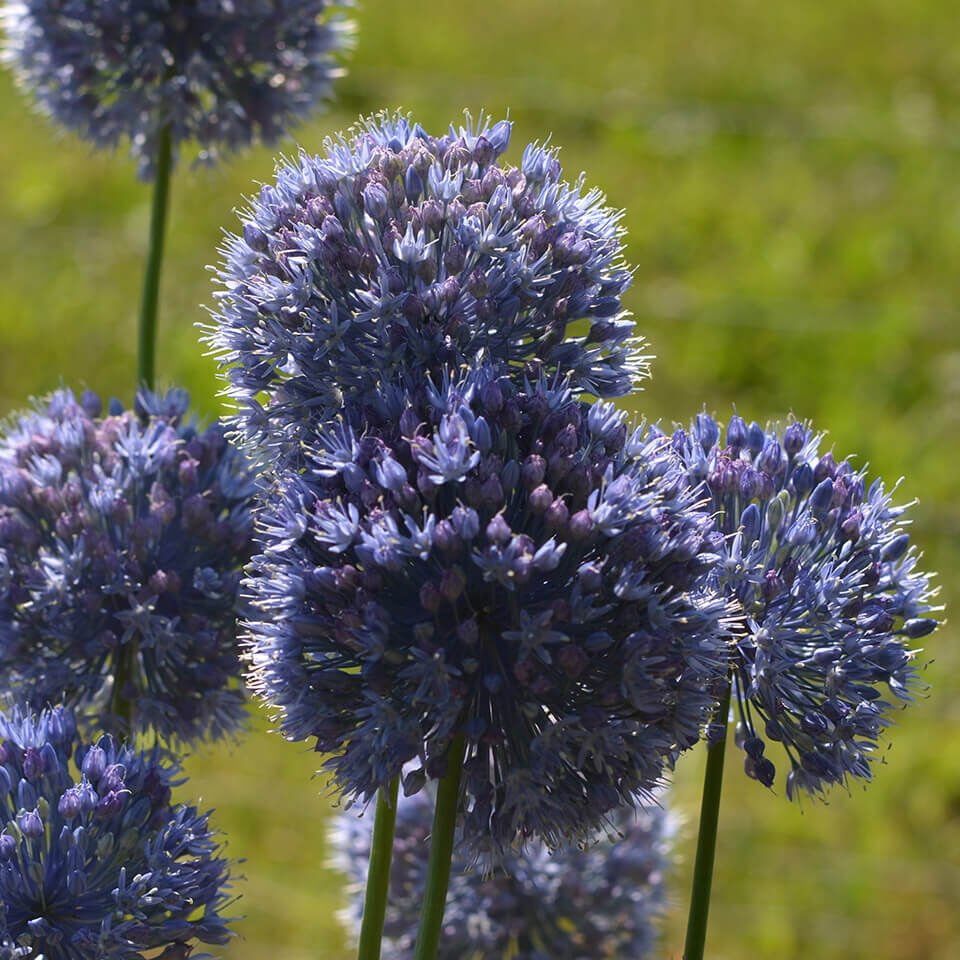
Blue leek (Allium caeruleum)
The blue leek or Siberian gentian leek is suitable for growing in the wild and produces eye-catching sky-blue, dense allium balls with a diameter of around 4 cm. This species grows very well in a moderately nutrient-rich location but in full sun. Especially during its flowering period, it goes well as a partner species to many rock garden plants.
Which plants go well with alliums?
Flowering perennials that also love the sun go very well with the attractive bulbous flowers. Cranesbill (Geranium), catmint (Nepeta) and peonies (Paeonia) can also be combined in an Allium location. Alliums also look good among grasses. Small species grow ideally in rock gardens or in large areas so that they can run wild.
Proper care & planting of alliums - the most frequently asked questions
Ornamental leeks are generally hardy and can withstand temperatures below minus 15 degrees. In harsh locations or for some species that are not fully hardy, winter protection with straw, leaves or brushwood should be provided. Fertilising is not necessary.
The individual Allium bulbs are annuals, but form reproductive organs and daughter bulbs so that it seems as if the same bulb sprouts again every year. Over time, the bulbs spread throughout the bed. To prevent overgrowth in the garden, the Allium bulbs should be dug up and replanted in the soil in autumn.
Ornamental leeks are not demanding, but should be planted in a sunny position - or in light shade - and, like tulips, thrive ideally in well-drained soil. Allium bulbs will rot if there is too much moisture.
The ideal period is autumn. As long as it is frost-free, the bulbs can be planted, even until December if there is no frost. However, the earlier the bulbs are planted in the ground in autumn, the better they can take root.
The depth of the planting hole depends on the size of the bulb. Rule of thumb: The planting hole should be three times as deep as the bulb is thick. If the soil is water-permeable and not waterlogged, fertilising is not absolutely necessary.
Ornamental leeks are decorative in the flower bed, but can also be cut for the vase once the individual flowers have opened. Above all, Allium can be dried. To do this, it is cut and dried upside down in an airy, dry place.
Once the Allium flowers have faded, the stems usually remain in the bed as decorative elements. The withered foliage can be cut/removed. However, once all the above-ground parts of the plant have withered, the entire flower and leaves can also be removed. If the allium flowers are dry, they can still be used as dried flowers in dried flower bouquets.
Depending on the species and variety, ornamental alliums flower between April and September. Alliums should then be cut to put in a vase as a cut flower or to dry and use as a dried flower. Alliums should be left in the bed after flowering so that the nutrients can be drawn back into the bulb. Allium should only be cut when the aerial parts are yellow and limp.
Depending on the location, Allium flowers for up to 3 weeks. The question of when to cut Allium depends on the Allium variety in question. In general, it can be said that the flower ball should have unfolded and already be showing colour. As a cut flower in a vase, the ornamental allium is just as long-lasting. It can easily last up to 3 weeks in a vase. However, the water in the vase should then be changed every two days because, as a bulbous plant, it has a strong influence on the water. The sap escaping from the stem quickly clouds the water, especially at warmer room temperatures, and gives off a typical, rather unpleasant, intense onion odour. However, if you allow the Allium to dry, i.e. remove it from the vase water early, it will retain its attractive shape and appearance as a dried flower for a long time.
If the allium grows without flowering, the causes may be a lack of nutrients, rotten bulbs, the wrong location, drought or pests. It is then necessary to remedy the situation, for example by moving the bulb, loosening the soil, fertilising or watering. Too much nitrogen in the soil can often be the cause of growth without flowering.
All parts of the ornamental leek plant are edible, so Allium is harmless and non-toxic to humans. However, some types of allium can be poisonous to animals such as cats and dogs.
Ornamental leek species usually form daughter bulbs that can be separated from the mother bulb and replanted in autumn. Species such as wild garlic spread rapidly on their own in this way. Plants that are too dense can be dug up in late summer and replanted. However, many species can also be propagated by seed. The plants are cold germinators, which means that the seeds need to be exposed to cold temperatures of around freezing point for several weeks after sowing in order to sprout.
Possible diseases and pests
Pests and diseases are not a major threat to ornamental leeks. The plants can only be attacked by aphids. Fungal infestation can be avoided if the ornamental leek is not too moist. This in turn can also lead to rot damage to the bulbs. This is noticeable through a strong, unpleasant odour.













